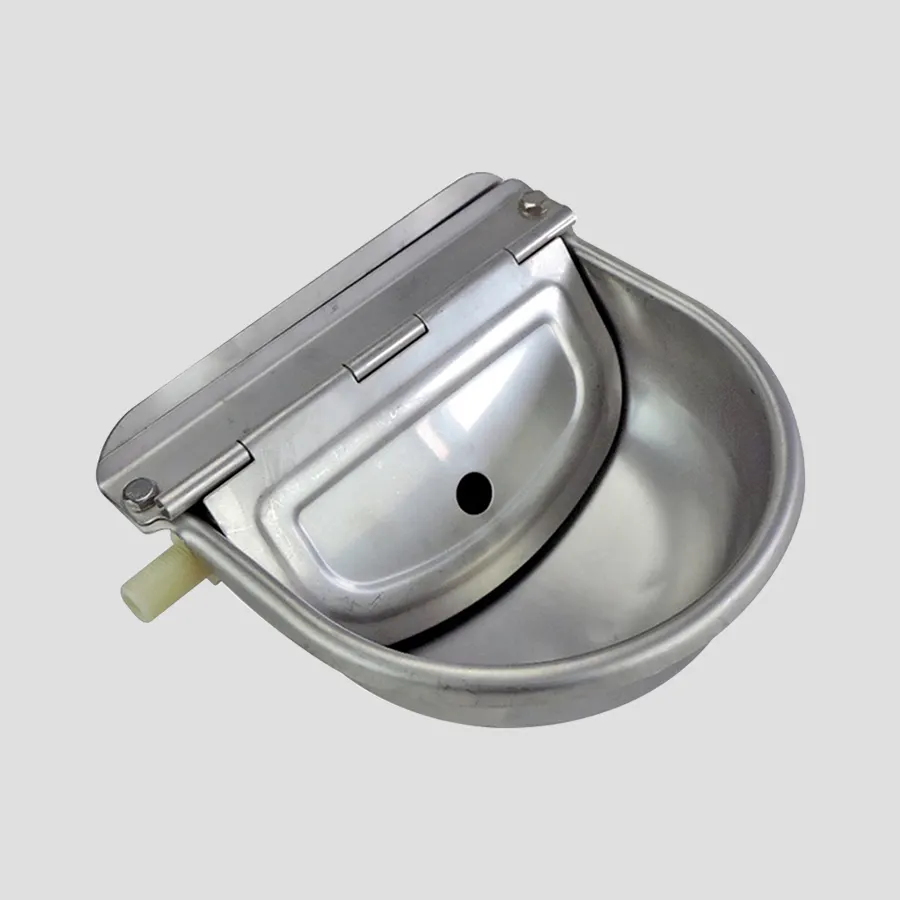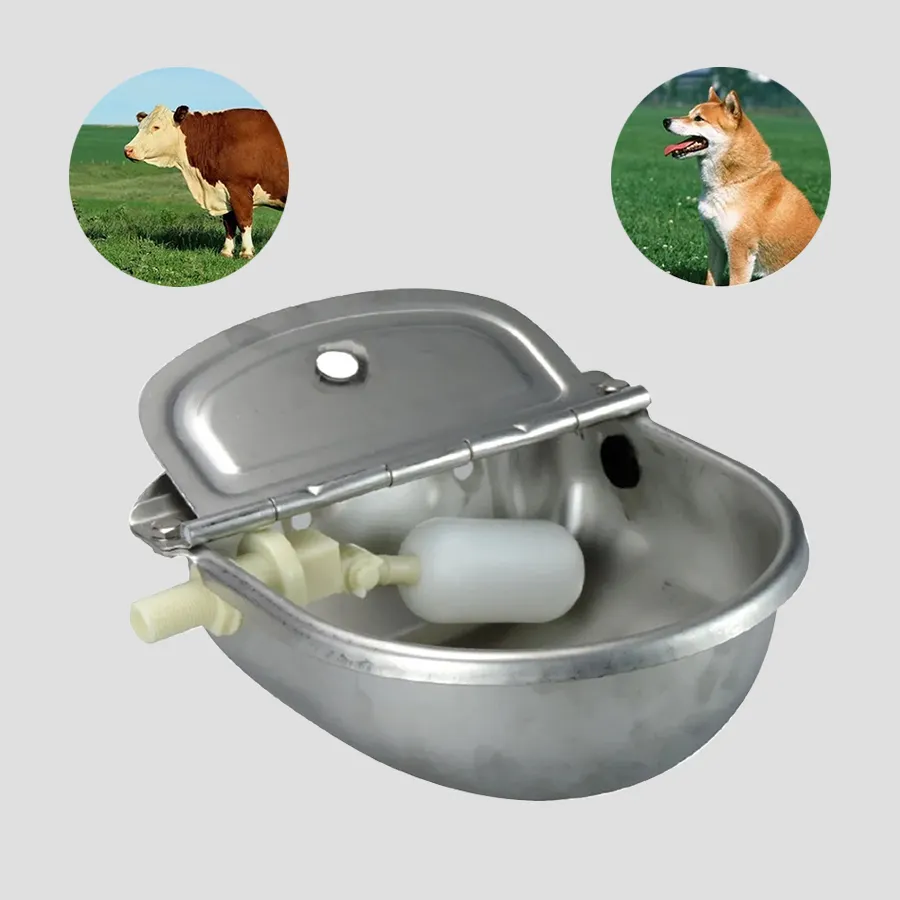Understanding the Role of Design in Livestock Hydration
Animal drinking bowls play a crucial role in maintaining the health, hydration, and productivity of various livestock and domestic animals. The importance of ensuring that every species has access to clean, consistent water through an appropriate delivery system cannot be overstated. With a growing focus on animal welfare, choosing the correct animal drinking bowls according to species-specific needs has become more significant than ever.
Proper hydration impacts digestion, milk production, body temperature regulation, and overall metabolic health. Choosing the wrong type of bowl may not only reduce water intake but can also lead to contamination, injury, or stress for the animal. Therefore, the design, material, and delivery mechanism of animal drinking bowls must match the species and environmental demands.
Material Considerations for Different Species
Stainless Steel for Dairy and Beef Cattle
For large animals like dairy and beef cattle, stainless steel animal drinking bowls are widely favored. These bowls are durable, corrosion-resistant, and easy to sanitize. The strength of the material allows them to withstand the impact and weight of larger animals without deforming. Stainless steel options are often equipped with float valves or automatic refill systems, reducing the need for constant manual monitoring.
In addition to strength, these bowls usually offer a deep and wide drinking surface, ensuring that adult cows can drink comfortably. The material is also non-reactive, maintaining the quality of the water and ensuring animals consume enough to remain productive.
Plastic and Composite Materials for Goats and Sheep
Goats and sheep require smaller, often more shallow animal drinking bowls. Plastic and composite materials offer a lightweight yet durable solution for these species. Many farmers prefer UV-resistant plastic bowls that can be easily mounted on fences or walls and cleaned regularly.
These bowls are often paired with low-pressure valves or triggered watering systems that are less intimidating for smaller livestock. They ensure a steady flow of fresh water without overwhelming the animal. Proper design can help reduce spillage and water waste while ensuring accessibility for animals of all sizes and ages.

Species-Specific Bowl Designs
Swine Hydration Systems
Pigs have specific needs that must be met when it comes to drinking water. Animal drinking bowls designed for pigs are usually deep, with reinforced edges to prevent tipping or breakage. Since pigs tend to root and push, bowls are often mounted at ground level or into concrete to prevent movement.
Some pig-specific models include nipple drinkers or integrated bowl systems that reduce water waste and contamination. These systems also discourage playing or wallowing in the water, which can lead to messy, unsanitary conditions in their pens.
Equine-Friendly Features
For horses, animal drinking bowls must accommodate their unique drinking behaviors. Horses tend to gulp water and require deeper bowls with high water turnover. Stainless steel or heavy-duty rubber materials are commonly used to prevent injury and ensure hygiene.
Automatic filling options are popular in stables to maintain a constant supply of fresh water. Additionally, horse-specific bowls are designed to minimize splashing and allow natural head movements, mimicking the way they drink from natural sources.
Environmental Factors Influencing Design
Cold Climate Requirements
In colder regions, animal drinking bowls must be insulated or equipped with heaters to prevent water from freezing. Electric or solar-powered heated bowls are commonly used for livestock in pastures or open barns. For instance, heated stainless steel bowls provide a reliable option for cattle during the winter months.
These systems help ensure uninterrupted access to water, which is crucial for maintaining hydration in low temperatures. Frozen water sources can lead to dehydration and stress, compromising animal health.
Hot and Arid Conditions
In hot environments, animal drinking bowls must be designed to prevent overheating or bacterial growth. UV-resistant materials, covered bowls, and increased water flow systems are often utilized to maintain cool, fresh water throughout the day. Proper bowl placement in shaded areas also contributes to water quality and animal comfort.
Larger bowl capacities and frequent refilling are necessary in these conditions to meet increased hydration demands. These factors significantly impact animal performance, especially in dairy and meat production.
Automation and Labor Reduction
Float Valve and Trigger Mechanisms
Automatic animal drinking bowls that include float valves or trigger mechanisms significantly reduce the labor involved in manual watering. These systems maintain a constant water level and prevent overflow, ensuring that water is always available without wastage.
These innovations are particularly useful in larger farming operations where time and labor are critical resources. They also contribute to a more consistent hydration routine, which can enhance overall animal welfare.
Maintenance and Durability
The durability of animal drinking bowls reduces the frequency of replacements and repairs, contributing to labor efficiency over time. Low-maintenance materials such as stainless steel and UV-stabilized plastic require less frequent cleaning and are resistant to weather-induced wear.
Investing in well-constructed bowls ensures fewer interruptions in water availability and lower operational costs. This makes them a smart choice for modern, sustainability-focused animal husbandry.
Importance of Hygiene in Bowl Selection
Easy-to-Clean Surfaces
Smooth surfaces in animal drinking bowls are essential for maintaining hygiene. Stainless steel and certain high-grade plastics resist buildup and are easy to scrub clean. Regular cleaning reduces the risk of disease transmission and ensures animals are drinking from a safe source.
Detachable parts or tilt mechanisms also help in thorough cleaning, particularly in systems with automatic refilling. Keeping water clean promotes better hydration and reduces veterinary costs associated with waterborne illnesses.
Drainage and Overflow Protection
Good drainage and overflow control in animal drinking bowls help maintain clean and dry flooring in animal shelters. Overflowing bowls can lead to soggy bedding, mold, and slippery surfaces, all of which are harmful to livestock.
Bowls with built-in drainage or overflow spouts contribute to a healthier environment by controlling moisture levels. This, in turn, supports hoof health, bedding longevity, and air quality.
Customization Options for Diverse Needs
Adjustable Height and Mounting
Different species and age groups benefit from bowls mounted at varying heights. Adjustable-height animal drinking bowls make it easier to accommodate animals of different sizes without compromising their comfort or access.
For instance, calves require lower-mounted bowls compared to adult cows. Adjustable designs improve ergonomics, minimize water spillage, and reduce feed contamination from poor positioning.
Integration with Monitoring Systems
Modern farming practices increasingly integrate digital technology with traditional equipment. Some animal drinking bowls now come with water consumption monitoring systems, allowing farmers to track intake levels remotely.
This data can be critical in early detection of health issues, enabling proactive management. Such integrations align with smart farming goals, enhancing operational insight and animal welfare simultaneously.
FAQ
What is the best material for animal drinking bowls?
Stainless steel is generally considered the best due to its durability, hygiene, and resistance to corrosion. However, UV-stabilized plastics are also suitable for smaller animals and lighter-duty applications.
Can the same bowl be used for multiple animal species?
While it is possible, it is not recommended. Different species have different hydration habits and ergonomic needs. Tailored animal drinking bowls offer better comfort and water accessibility.
How often should animal drinking bowls be cleaned?
Daily cleaning is ideal, especially in hot climates or high-traffic barns. Automatic systems may require less frequent cleaning but should still be sanitized regularly to prevent bacterial growth.
Are automatic animal drinking bowls worth the investment?
Yes. They save labor, reduce water waste, and ensure animals have consistent access to fresh water, improving both efficiency and animal health.

